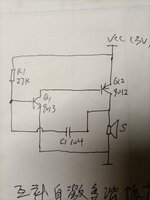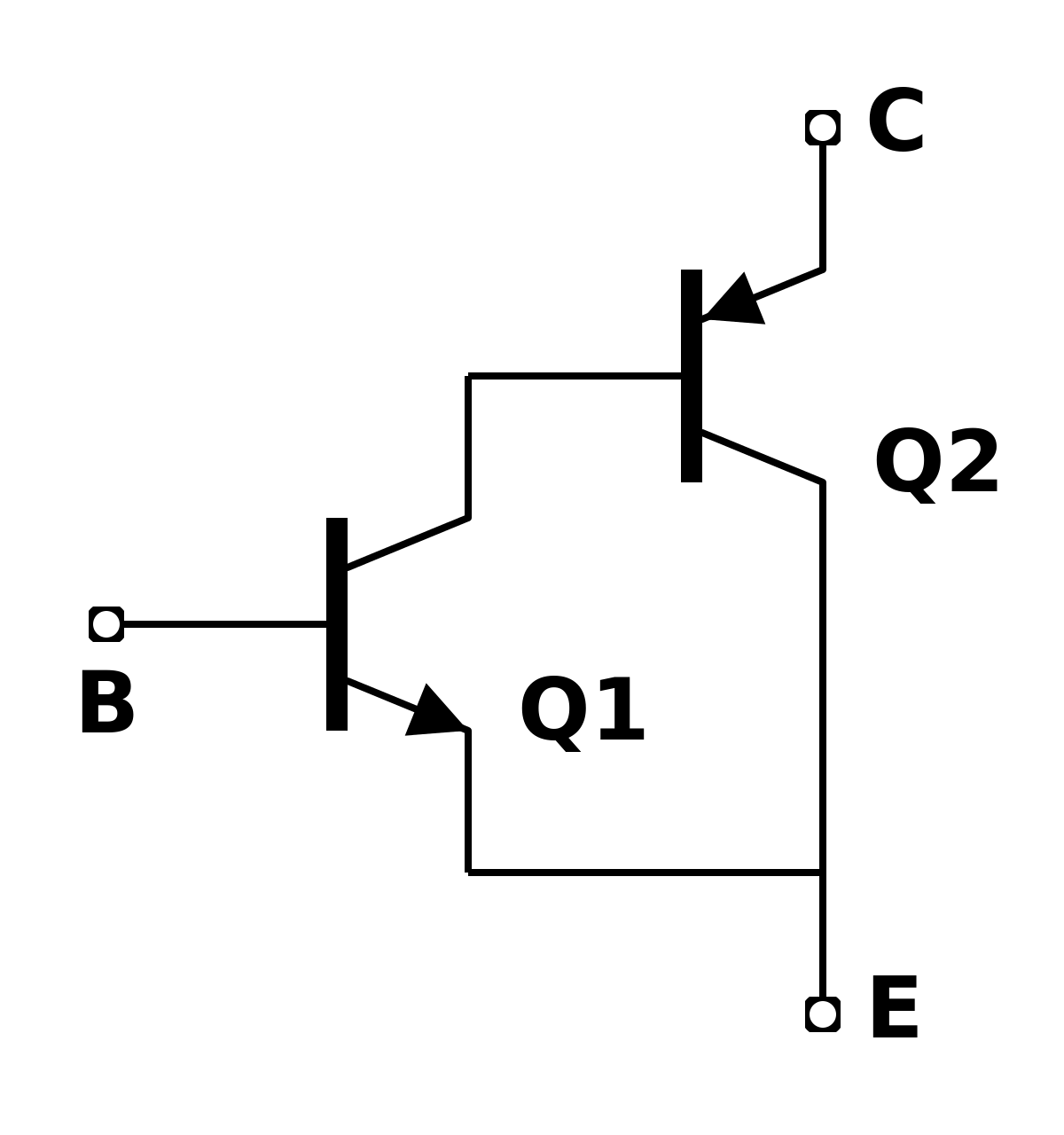jin2022
Newbie
hi,friends,
how this circuit oscillate?
at first , vcc charge c1 through r1 and speaker, makes left side voltage of c1 goes up, which makes q1 start to conduct. this makes q2 to conduct.which makes right side voltage of C1 goes up.
and then? how does the circuit oscillate?I'm puzzled. I need your help.
thx.
how this circuit oscillate?
at first , vcc charge c1 through r1 and speaker, makes left side voltage of c1 goes up, which makes q1 start to conduct. this makes q2 to conduct.which makes right side voltage of C1 goes up.
and then? how does the circuit oscillate?I'm puzzled. I need your help.
thx.

